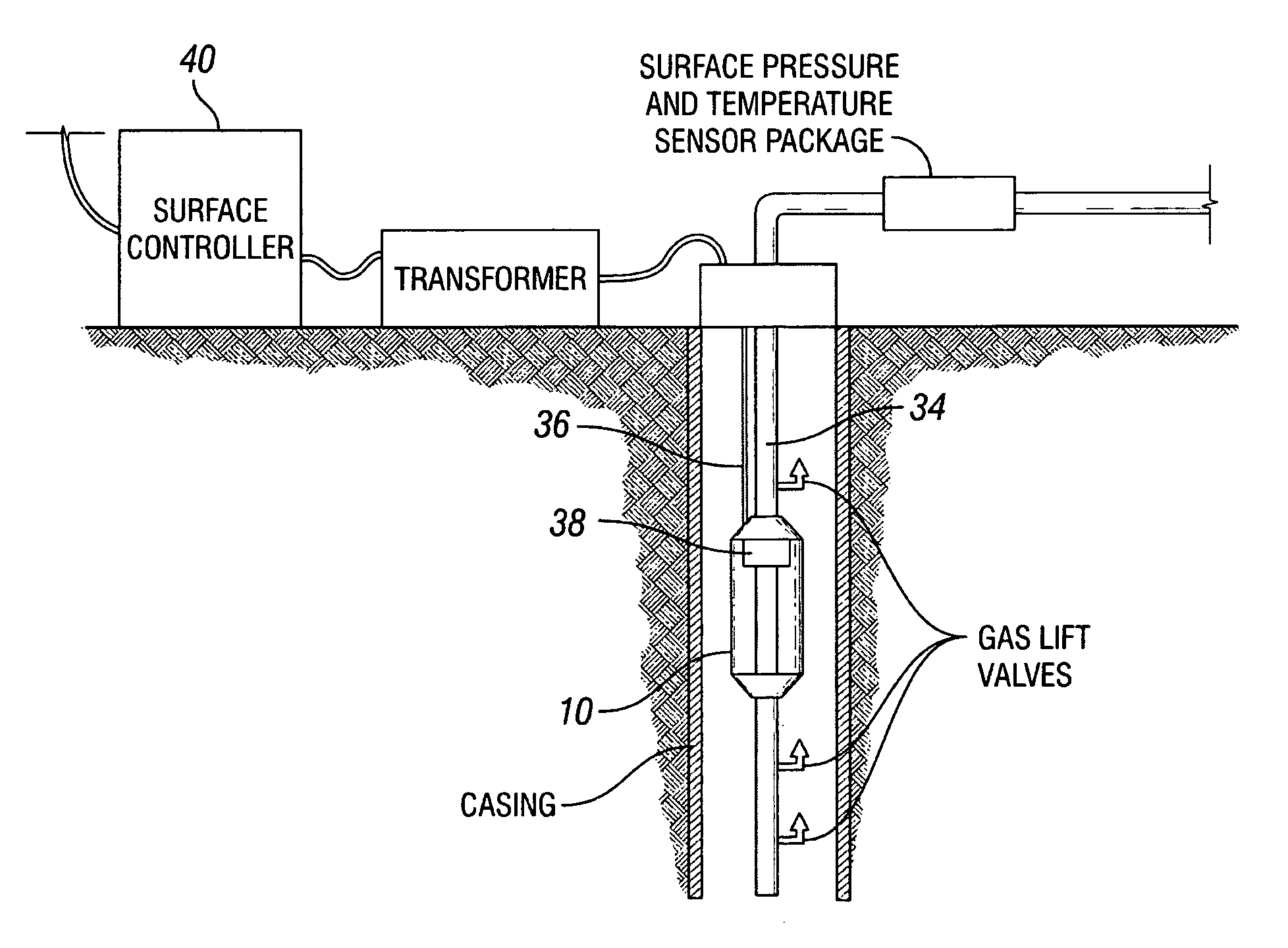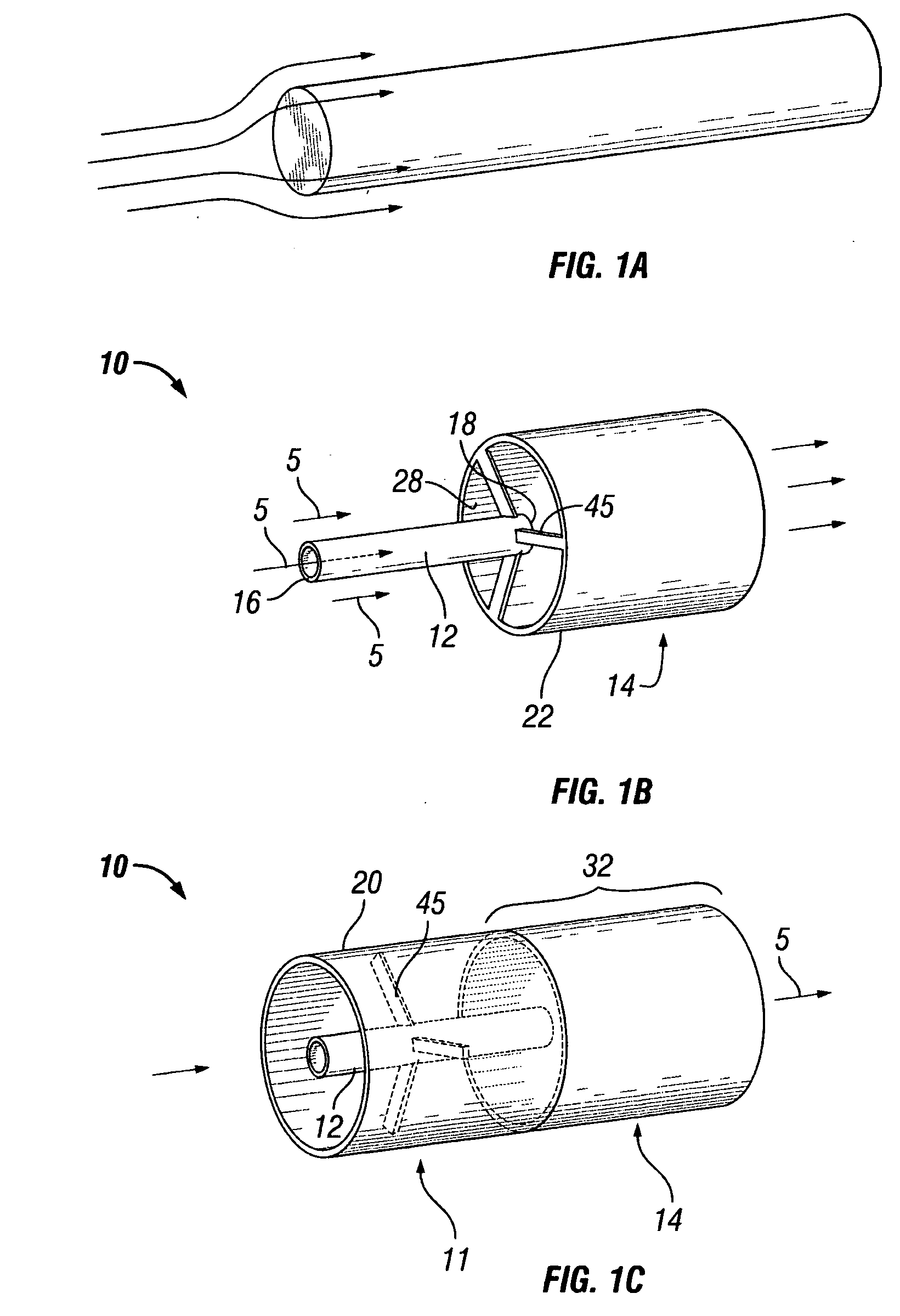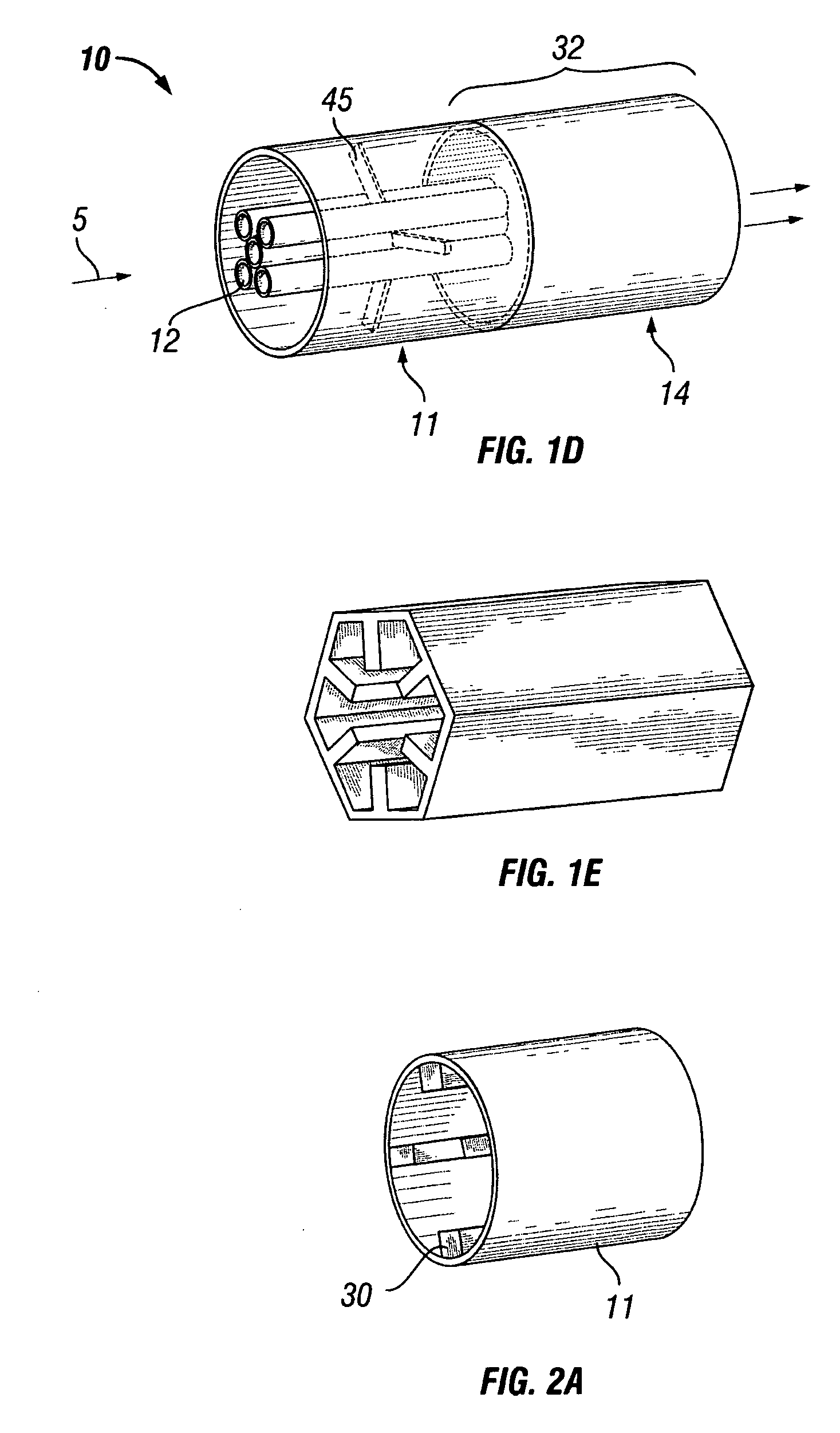Apparatus for treating fluid streams
a technology for fluid streams and apparatuses, applied in the direction of fluid removal, insulation, borehole/well accessories, etc., can solve the problems of significant amount of heat energy being lost to the surrounding environment and non-productive parts of the well, poor heat transfer characteristics, and significant energy loss to the surrounding environment, so as to improve the efficiency of fluid stream delivery, reduce operating costs, and improve the effect of fluid stream production
- Summary
- Abstract
- Description
- Claims
- Application Information
AI Technical Summary
Benefits of technology
Problems solved by technology
Method used
Image
Examples
Embodiment Construction
[0041] The present application relates to an apparatus suitable for treating fluid streams by: [0042] (a) transferring temperature increases to fluid streams, whether the fluid stream is produced downhole, or is injected from the surface; [0043] (b) regulating, and increasing temperature of the downhole fluid stream; [0044] (c) being installed downhole in a wellbore whether permanently or temporarily; [0045] (d) transferring temperature increases to fluid flowing in any direction; and [0046] (e) reaching and maintaining a selected fluid stream viscosity.
[0047] The present application also relates to a system suitable for: [0048] (a) recording downhole pressures and temperatures; [0049] (b) recording surface pressures and temperatures; [0050] (c) recording and monitoring power usage of the apparatus during treatment of a fluid stream; and [0051] (d) communicating surface and downhole fluid stream temperature and pressure and other parameters to the surface in order to monitor the ef...
PUM
 Login to View More
Login to View More Abstract
Description
Claims
Application Information
 Login to View More
Login to View More - R&D
- Intellectual Property
- Life Sciences
- Materials
- Tech Scout
- Unparalleled Data Quality
- Higher Quality Content
- 60% Fewer Hallucinations
Browse by: Latest US Patents, China's latest patents, Technical Efficacy Thesaurus, Application Domain, Technology Topic, Popular Technical Reports.
© 2025 PatSnap. All rights reserved.Legal|Privacy policy|Modern Slavery Act Transparency Statement|Sitemap|About US| Contact US: help@patsnap.com



